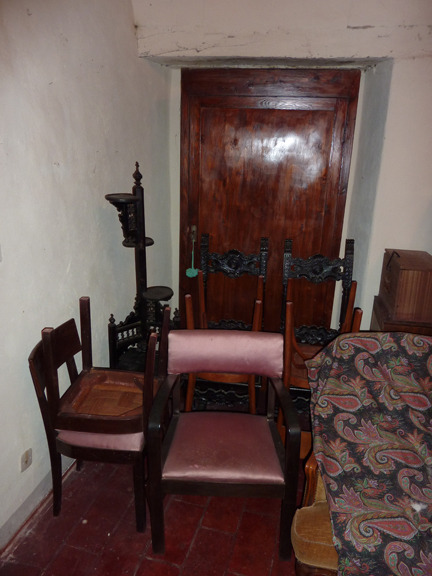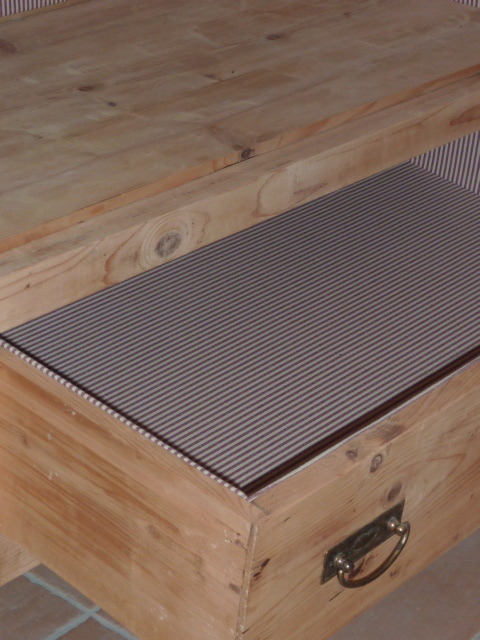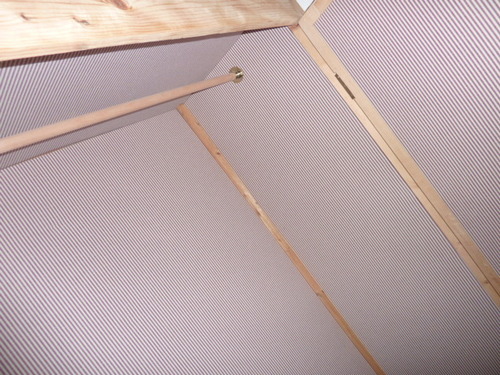These last few days of November have been a hive of activity at Casa sul Monte and pretty much everywhere we look we see fine nets draped like frost jewelled spiders webs under many of the hundreds of olive trees growing on the local hills. Its olive picking season!
The ripe olives are beaten and raked off the trees by local farmers, as many relatives and friends as possible that can be co-opted onto the task and, on occasions, other paid workers to help with the labour intensive and time consuming task. The nets are arranged to collect the olives as they fall, from which they are collected by hand, sorted from branches and leaves, and placed in plastic crates.
Dozens of crates are filled, precariously loaded onto trailers, back seats of cars and any other available vehicle, for transport to one of many local mills.
At the mill the olives are unceremoniously tipped into a large hopper to start their journey ... from raw fruit to beautiful, fragrant, peppery nectar!
The first step involves removing those leaves and bits of olive branch that have made the journey this far ... it is interesting to note how some loads arrive very well cleaned of this waste material, others much less so!
The olives, given an initial wash, drop onto the first of many conveyors that step by step, process by process, now take over and gently carry the fruit towards its inevitable but wonderful end.
Each batch of olives is carefully controlled and managed through the system to ensure it is kept totally separate from the preceding and subsequent loads, so each farmer is assured the oil received at the end is from their own olives.
Once their gross weight has been recorded (the farmer paying a fee per kilo for the processing) the olives wait their turn in the hoppers ...
... from where they are disgorged into another bath for a final thorough and vigorous wash before being delivered into the grinder and macerator.
Large rotating blades methodically grind their way though kilos of olives, reducing them to a thick pulp that is then pumped into the centrifugal press and the unwanted water content discarded. The unfiltered oil that remains is extracted and directed into a separate channel where the first of several filters removes any remaining pulp.
As the final product becomes, for the first time, recognisable it is pumped into another centrifuge where any remaining water and the precious oil are further separated before the final filtering process begins.
From here a rich, vicious, syrupy liquid emerges and flows smoothly and evenly into the first container. Tasting the liquid at this point gives the first clear indication of its sweetness, peppery taste and rich green colouring.
One more push and the fresh oil elegantly decants into the final container for accurate weighing before being dispensed for the farmer. This final net weight is critical for the farmer to know, for the first time, the yield of his crop.
The yield varies considerably between farmers and seasons depending on the weather, amount of rain, temperature extremes ... and can make a big difference to the volume and value of the oil extracted from each crop.
At just over 14% this year was about average although, rather like fishermen, all farmers bemoan the lack of the really big if rare crops of more than 20% in the past while conveniently forgetting the meagre, but equally rare pickings, with yields as low as 8% which occasionally occur!
Once weighed and the yield recorded, the cold pressed virgin oil is poured into containers ready to be taken home by the farmer. These smaller crops, as opposed to commercially managed olive groves, are primarily used by the farmer and his extended family for private use over the coming year as well as being shared with any who helped pick the crop.
This freshest of virgin olive oils is literally minutes old, still cloudy and has a vibrant green colour and unique sweet-peppery taste, characteristics that it will unfortunately quickly loose and hence are rarely found in the more processed and refined virgin olive oil typically available commercially.
The very best way to enjoy this wonderful oil is to lightly toast a fresh slice of the typically unsalted Umbrian bread, rub this with a clove of garlic, pour the new oil liberally all over the slice ... sprinkle with sea salt and eat while warm!
There is literally nothing else like it ... believe me!
The only challenge is how to limit oneself to no more than 3 slices, ... or 4 ... or, go on, maybe just another couple of slices! Can I stop at 7?




















































